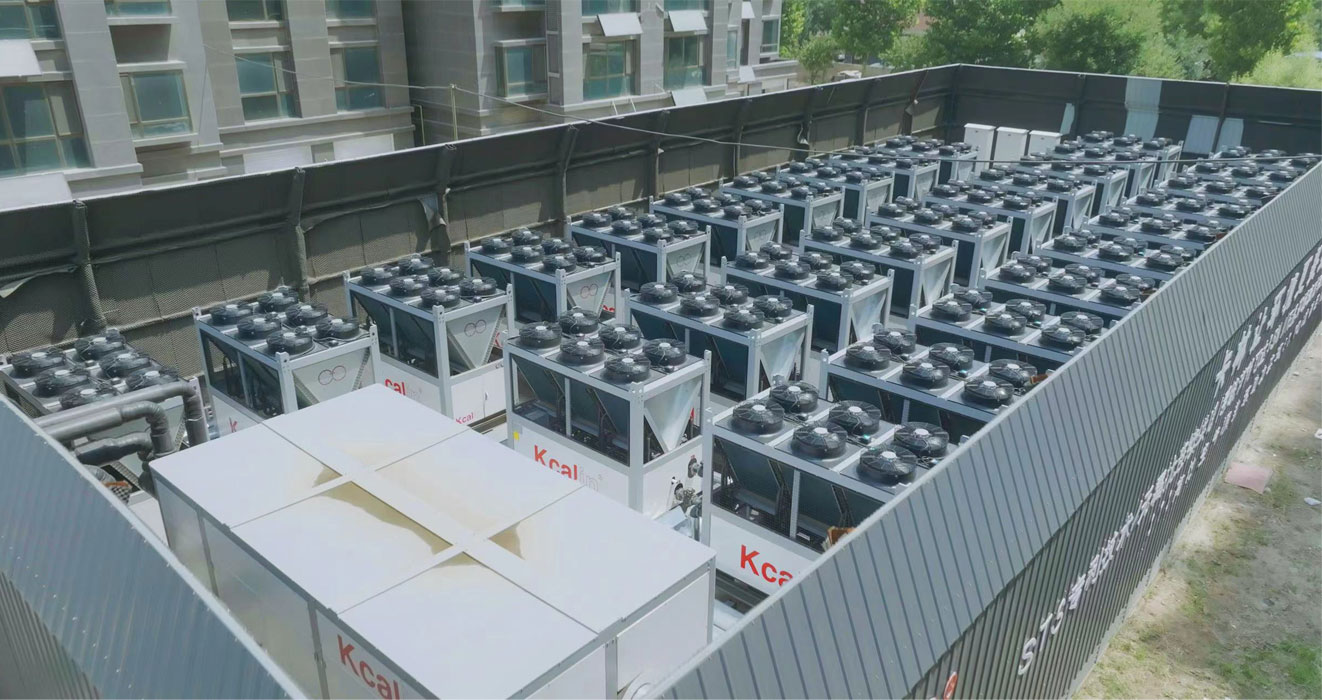With the increasing awareness of environmental protection and technological advancements, traditional heating methods are gradually being replaced by more efficient and environmentally friendly solutions. In this context, air source heat pumps, as a new type of energy-saving equipment, are becoming a new choice for community heating. By building distributed heat source stations, air source heat pumps not only achieve high efficiency and energy conservation, but also improve the quality of life of residents.
Air source heat pumps utilize low-grade thermal energy in the air and convert it into high-grade thermal energy through compressors and heat exchangers for heating. This process mainly includes the following steps:
Heat absorption: Air source heat pumps absorb heat from the ambient air, and the refrigerant vaporizes in the evaporator.
Heat increase: The vaporized refrigerant is compressed by the compressor, causing an increase in temperature and pressure.
Heat release: The high-temperature and high-pressure refrigerant exchanges heat with the heating medium (such as water) in the condenser, releasing heat.
Recycling: The refrigerant is depressurized and cooled again through the expansion valve, returned to the evaporator, and enters the next cycle.
Compared to traditional centralized heating systems, distributed heat source stations have multiple advantages:

Efficient and energy-saving: Air source heat pumps have a high energy efficiency ratio and can significantly reduce energy consumption. Through distributed arrangement, the heat transfer loss is small, further improving the overall efficiency.
Environmentally friendly and low-carbon: Air source heat pumps mainly utilize the heat energy in the air, reducing dependence on fossil fuels and lowering emissions of carbon dioxide and other pollutants.
Flexible installation: Distributed heat source stations have strong flexibility and can be arranged according to community size and needs, adapting to different types and sizes of communities.
Independent operation: Each distributed heat source station can operate independently, reducing the complexity of pipeline networks and management difficulties in centralized heating systems, and improving system reliability.
In community heating, the distributed heat source stations built by air source heat pumps mainly have the following application modes:
Residential heating: In newly built and renovated residential areas, air source heat pump systems can provide independent heating for each unit, improving the comfort of each household.
Commercial and public buildings such as schools, hospitals, shopping malls, etc., air source heat pumps can meet large-scale heating needs while maintaining efficient operation and reducing operating costs.
Renovation of old residential areas: In the heating renovation of old residential areas, air source heat pump systems can be quickly installed to reduce the impact of construction on residents' lives and achieve energy-saving upgrades.
Economic and social benefits of air source heat pumps
Reduce operating costs: Air source heat pump systems have low operating costs and can effectively reduce residents' heating expenses. Meanwhile, distributed heat source stations avoid transmission losses and maintenance costs in centralized heating systems.
Improving living comfort: Air source heat pump heating has stable and evenly distributed temperature, avoiding the uneven heating and cooling phenomenon of traditional heating methods and improving residents' living comfort.
Promoting green community construction: By promoting air source heat pump technology, communities can achieve energy-saving and emission reduction goals, promote green community construction, enhance the overall image of the community, and raise residents' environmental awareness.
As an efficient and environmentally friendly heating technology, air source heat pumps provide a new model for community heating by creating distributed heat source stations. This mode not only improves energy utilization efficiency and reduces operating costs, but also improves the living environment of residents and promotes the construction of green communities. With the continuous advancement and promotion of technology, the application prospects of air source heat pumps in community heating will be even broader, becoming an important development direction for future heating systems.







Comment